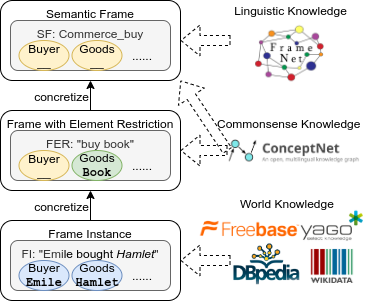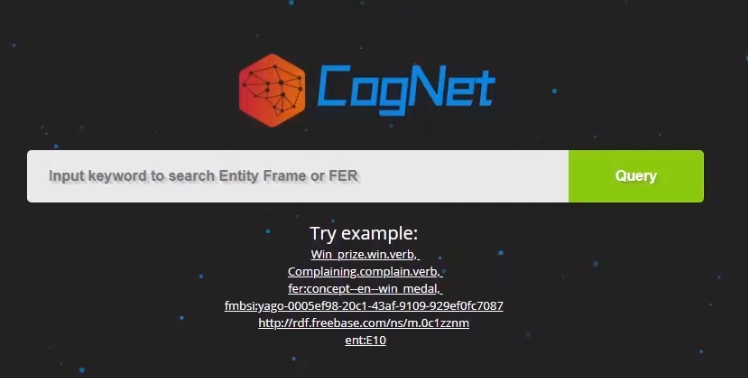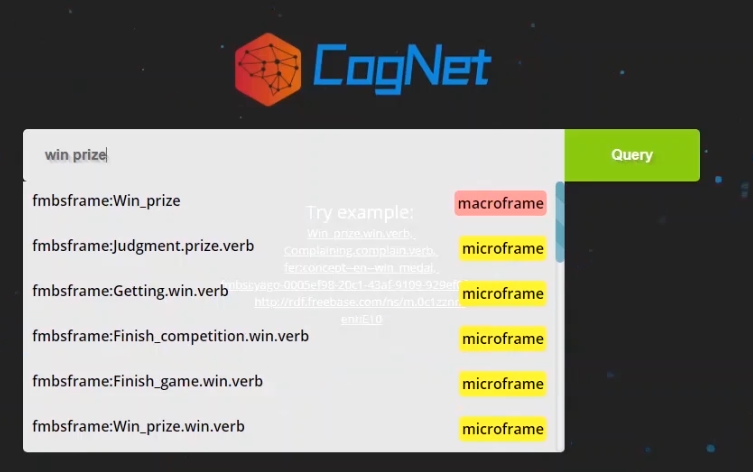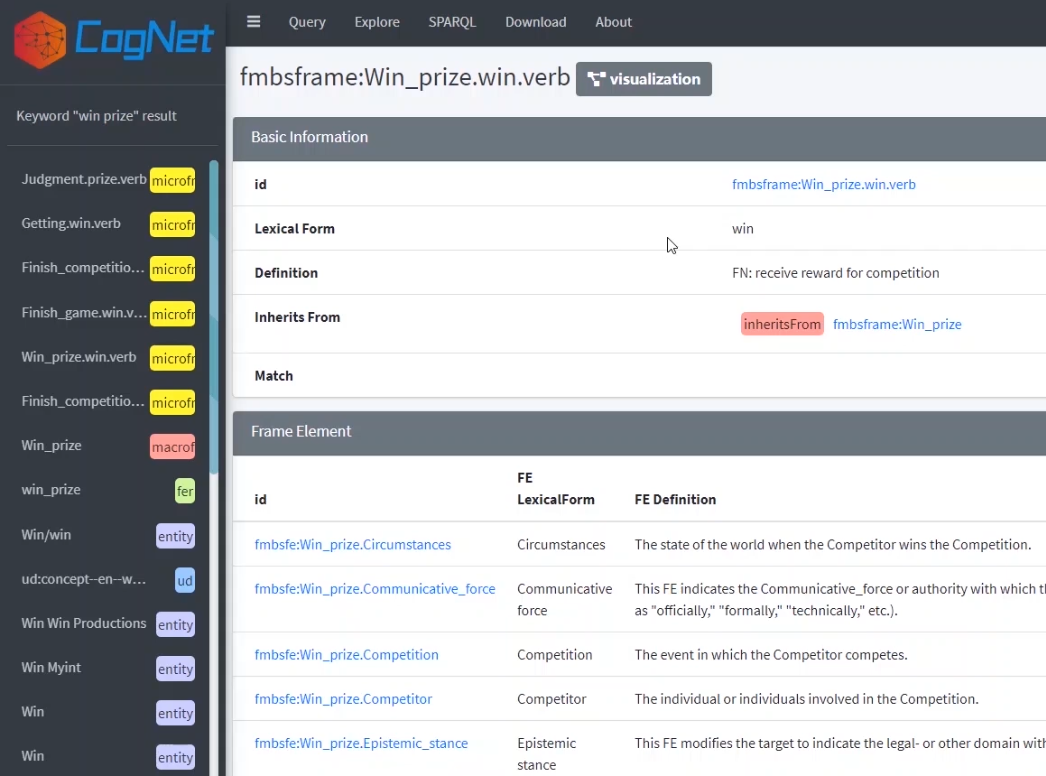What is CogNet?
CogNet is a knowledge base that attempts to bridge different types of knowledge and represent them consistently in RDF format. It integrates three types of knowledge: (1) linguistic knowledge from FrameNet, which schematically describes situations, objects and events. (2) world knowledge from YAGO, Freebase, DBpedia and Wikidata, which provides explicit knowledge about specific instances. (3) commonsense knowledge from ConceptNet, which describes implicit general facts. To meet this goal, CogNet reuses schema from FrameBase, and extends to more levels of knowledge.

CogNet model aforementioned different types of knowledge into a three-level frame-styled representation architecture. As is shown in the image, the top is semantic frames (SF), which provides linguistic knowledge about particular situations, objects and events and their involved frame elements. To compile natural language phrases in commonsense assertions, in the middle we introduce frame with element restriction (FER), which concretizes some SF and is associated with restrictions on its elements. At last, the bottom is frame instance (FI), in which elements are bound with specific objects or literals, so it can express world knowledge facts about entities. The three levels form a chain from abstract to concrete: SF->FER->FI, and make different types of knowledge into a consistent whole.
How to Use CogNet?
In this platform, you can access CogNet data via key-word querying and top-down exploring. We also provide a SPARQL query service for skilled users. For further utilization, you may request to download the whole data dump of CogNet here.
Key-word Query

In the homepage, we provide an interface for unified queries of different types of knowledge, which return a list of candidate nodes according to the query. Users can input word, phrases or sentence to find corresponding knowledge, such as the names of SFs, surface form expressions of FERs or labels of entities involved in FIs. The system will aggregate the results and return them to users.

Take "win prize" as an example. First "win prize" match a macro-frame (semantic frame defined in FrameNet) named Win_prize. Also, the system detects there is a verb win in the input text, and return corresponding micro-frames (semantic frame with a particular lexical unit). Then, click "Query" or choose one from the candidate list to enter the detail page.

For each SF, FER, FI, and entity involved in FIs, we provide a page to show its description and relationship to other nodes. The page may have different content, according to the node type. When entering a page by key-word querying, other results will display in the left side.
Top-down Exploring
As CogNet is organized with different levels of frame representations, we provide a top catalog for semantic frames, from which users can explore knowledge from the top down via “concretize” relations. Users can click the "Explore" button on the homepage and get a list of macro-frame.

More Information
Here are some materials for better understanding CogNet.
Glossary
If you are not familiar with FrameNet and FrameBase, please read Glossary to better understand the terms like "frame element" or"macro-frame".
Data Model
If you want to learn further about the architecture of CogNet and its RDF schema, please read Data Model for more details.